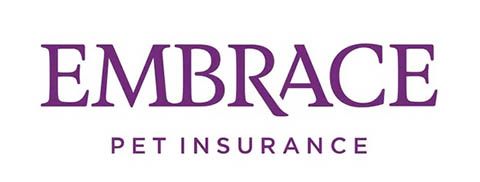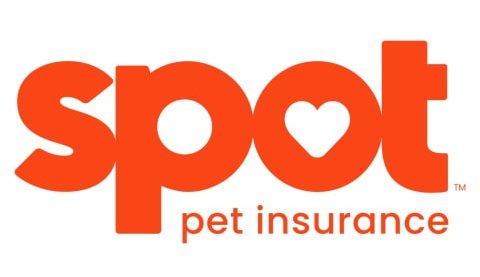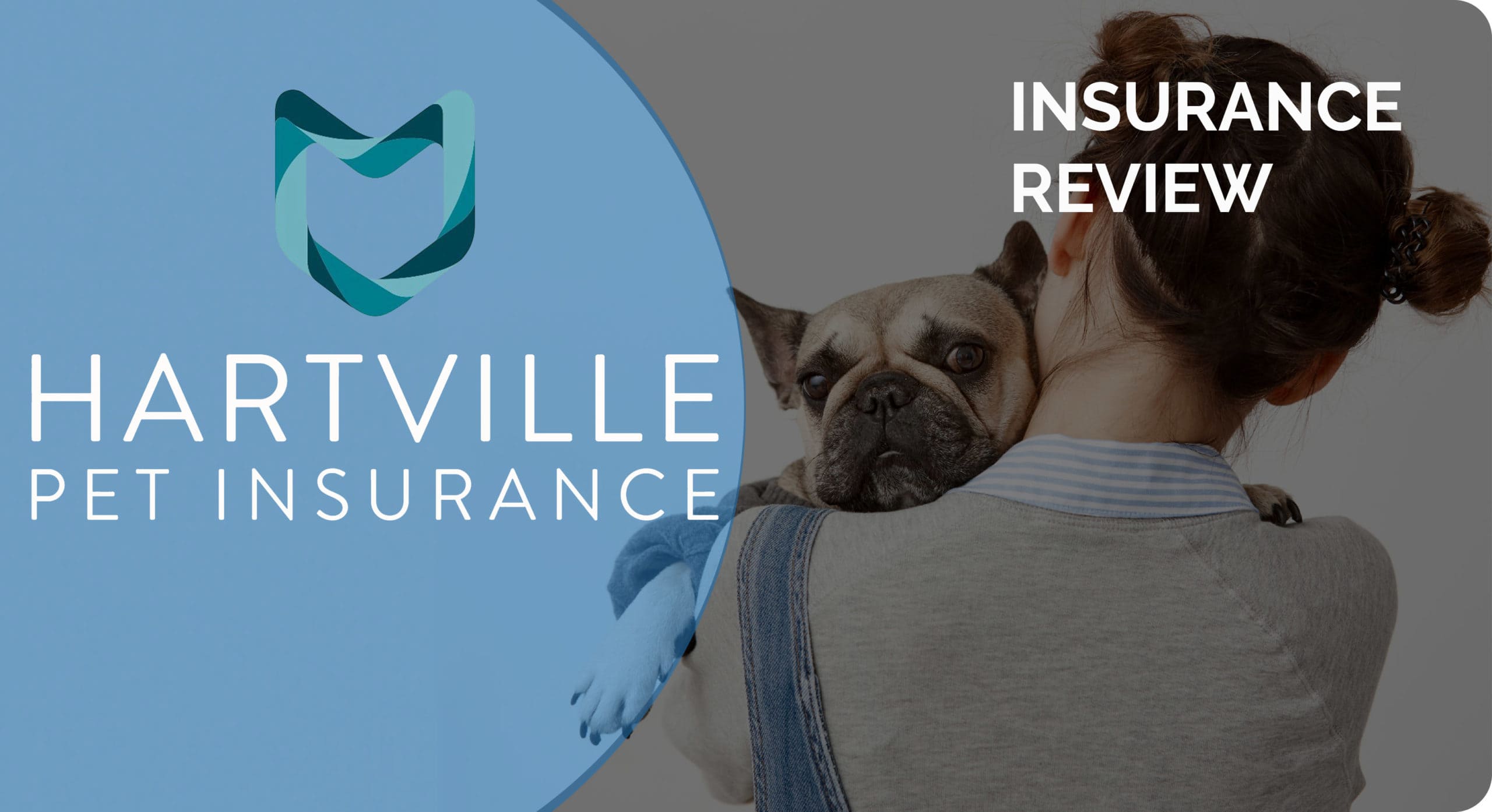9 Best Pet Insurance Providers for Pre-Existing Conditions – 2024 Reviews & Top Picks

Updated on

Pet insurance is a must when owning a pet since it can ensure that it is taken care of if it falls ill or has an accident. Unfortunately, no pet insurance covers chronic pre-existing conditions. However, some will cover curable pre-existing conditions, but they have limitations and requirements. Finding the best pet insurance can be overwhelming, even more so when your pet has a pre-existing condition, so we helped narrow it down for you. In this article, we’ll examine plans for pre-existing conditions and how to choose the best one for you and your pet.
A Quick Comparison of Our Winners in 2024
| Rating | Image | Product | Details | |
|---|---|---|---|---|
| Best Overall |
 |
Spot |
|
Click to Get Quote |
| Best Value |
 |
Figo |
|
Click to Get Quote |
 |
MetLife |
|
Click to Get Quote | |
 |
Lemonade |
|
Click to Get Quote | |
 |
ASPCA |
|
Click to Get Quote |
The 9 Best Pet Insurance Providers for Pre-Existing Conditions
1. Spot Pet Insurance – Best Overall
If your pet has been free of symptoms and treatment for 180 days, Spot insurance will not consider the condition as pre-existing. Spot accident and illness plans will cover your pet in the event that they get sick or injured. They offer two wellness and preventative care options, which are their gold and platinum coverage options, and you can add either one to your accident and illness plan for an extra cost. Spot pet insurance has numerous coverage caps, deductible options, and reimbursement options, helping you customize your policy to your needs. Their waiting period after signing up is 14 days.
- A condition free of symptoms for 180 days is not considered pre-existing
- Customizable plan
- Affordable
- 14 day waiting period is longer than other competitors
2. Figo – Best Value

Figo pet insurance will cover curable pre-existing conditions as long as the condition is free of symptoms, has been free of treatment, or is cured for one year. Some examples of cured conditions may include vomiting and diarrhea that is undiagnosed or dermatological conditions. With Figo’s insurance plan, your pet will be covered for common illnesses, accidents, emergencies, and wellness and preventative care.
Figo provides an extra care pack for cremation or burial, lost pet rewards, boarding fees, and the loss of a pet, so you can get the most from your insurance. Pre-existing coverage is unavailable in all states and doesn’t apply to ligament and knee conditions, renal disease, hypothyroidism, cancer, and IVDD.
- Broad coverage
- Wellness care add-ons
- Covers curable preexisting conditions
- Pre-existing coverage is not included in all states
3. MetLife

MetLife Insurance covers pre-existing conditions, given that they are curable and are free of symptoms for 180 days or 12 months. They offer an accident-only plan, which goes into effect at midnight after signing up. Metlife’s major medical plan covers accidents and illnesses with an option to add on a wellness plan for preventative care coverage.
MetLife has various options for annual limits, deductibles, and reimbursements to help you customize your policy. It has a 6-month waiting period for IVDD and serious ligament issues.
- Covers curable pre-existing conditions that are free of symptoms for a period
- An accident-only plan can be purchased
- Add-on wellness plan available
- Customizable
- 6-month waiting period for certain conditions
4. Lemonade Pet Insurance

Lemonade offers coverage for pre-existing conditions that have been cured or have not shown symptoms for at least 12 months. Their accident and wellness coverage covers a wide range of costs, with options on annual limits, deductibles, and reimbursements. They also have add-on packages for more comprehensive coverage, as well as a 5% annual discount, a 5% multi discount, and a 10% bundle discount to help you add more value to your policy. Coverage for pre-existing conditions will depend on your state.
- Coverage for pre-existing conditions that are cured or symptom-free for 12 months
- Broad coverage
- Add on packages
- Discounts available
- Eligibility for pre-existing condition coverage is dependent on your state
5. ASPCA

ASPCA pet insurance will cover curable pre-existing conditions that don’t present symptoms for 180 days, excluding ligament and knee conditions. Their complete coverage plan covers illness and accidents and is comprehensive and customizable to suit your pet’s needs as well as your budget. ASPCA also offers a wellness package for preventative care and 90% cash back on medical expenses. To help you save money, ASPCA offers a 10% multi-pet discount and a 10% discount for ASPCA employees.
- Covers curable pre-existing conditions that are symptom-free for 180 days
- Comprehensive and customizable
- Wellness package add-on
- Discounts available
- Ligament and knee conditions are excluded
6. Embrace Pet Insurance

If your pet is free of treatment and symptoms of a pre-existing condition, it will be covered by Embrace pet insurance. It has a comprehensive policy that covers accidents and illness and has an additional wellness rewards plan. Embrace, unlike some insurers, has an accident-only policy. Embrace has a 6-month waiting period for canine orthopedic conditions, which can be reduced to 14 days if your dog undergoes an orthopedic exam and waiver process. Their annual limits, unlike other companies, are unlimited, but they only offer one deductible option of $100. A 5%–10% multi-pet discount is available, as well as a “healthy pet deductible” that reduces your deductible by $50 if you do not file for a claim.
- Pre-existing conditions covered if your pet is free of symptoms for 12 months
- Additional wellness rewards plan
- Accident-only plan available
- Option to reduce 6 monthly waiting period on orthopedic conditions
- Unlimited annual limit
- Discounts available
- Only one deductible option
7. Fetch

Fetch offers coverage on curable pre-existing conditions, but their terms can be confusing to understand. If the condition is identified at least one year before the policy, it will be excluded for a period of time, and conditions that don’t occur will be covered during this time, as long as a vet performs an annual exam after the exclusion period and before the condition reoccurs.
Fetch insurance provides a comprehensive treatment plan for injuries and illnesses, but preventative care is not covered because it does not provide a wellness plan. You can avoid installment fees by paying quarterly or annually and save up to 30% on your premiums if you don’t file claims. Fetch offers discounts for pets adopted by a shelter or rescue center but doesn’t offer a multi-pet discount.
- Coverage for curable pre-existing conditions
- Save up 30% on the premium for not filing a claim
- Discounts offered for rescue or adopted pets
- No wellness plans
- Coverage for pre-existing conditions is confusing and is limited
8. Nationwide

Nationwide will provide coverage for certain pre-existing conditions if the condition has been cured for at least 6 months. It has a variety of pet insurance policies, not only for dogs and cats but exotic pets as well. Nationwide account holders can access Pet Rx Express, which provides favored pricing on pet prescriptions at any Walmart or Sam’s Club pharmacy. Furthermore, they can process prescription insurance claims at the pharmacy counter. A $250 deductible is available for the Whole Pet with Wellness plan, and the Major Medical plan has conditional caps. Existing Nationwide customers save 5% on a new pet health insurance plan.
- Coverage for pre-existing conditions that have been cured for 6 months
- Coverage for exotic animals
- Access to Pet Rx Express
- Only one choice for a deductible
9. Pumpkin

Pumpkin pet insurance covers curable conditions that have been free of treatment and symptoms for 180 days, except knee and ligament conditions. Pumpkin Pet Insurance offers an extensive accident and illness plan for pets. Their Preventive Essential plan is an optional wellness package that assists in paying health and wellness expenses. Limits and deductible options are available, but there is only one reimbursement option of 90%, which may result in a higher premium. Pumpkin Pet Insurance provides a 10% discount for each additional pet insured, but your discount may be limited to a certain amount.
- Covers curable conditions that are symptom-free for 180 days
- Optional wellness package for preventative care
- Discounts offered
- Only one reimbursement option
Buyer’s Guide: How to Choose the Best Pet Insurance Plan for Pre-Existing Conditions
What to Look for in Pet Insurance for Pre-Existing Conditions
The policies available vary significantly in terms of price, coverage, and exclusions. Pet insurance companies generally exclude pre-existing conditions in their plans due to the cost of treatment and the short life span of a pet, but some companies cover curable pre-existing conditions. You will need to understand how that works and what else is included in a policy to keep your pet well cared for. You will need to consider factors such as the premium, deductibles, reimbursements, claims, and waiting periods.
Policy Coverage
The basic coverage for most companies will cover accidents and illness and provide options for add-ons for preventative care. While most companies don’t provide coverage for pre-existing conditions, some include coverage for conditions that are curable or haven’t presented symptoms for a certain time. Incurable conditions are illnesses or injuries that cannot be cured and must be managed.
Curable conditions are conditions your pet has been treated for but no longer suffers from. This will vary between insurance companies, and some will include other terms and conditions. Some pet insurance companies have a time limit of 12 to 24 months in which your pet must be symptom-free for a condition to be considered cured.

Customer Service & Reputation
Good customer service is crucial for things to run smoothly. You don’t want a company that you can’t get hold of, doesn’t give clear communication, and makes the process of claiming a nightmare. Many companies have helplines you can call or offer their services 24/7. You can tell a lot about how a company operates by reading reviews and hearing what other users say. Reading reviews and talking to other clients of the same company can help you determine if they are a reliable company to use.
Claim Repayment
A claim repayment is the amount of money you will be reimbursed for an accident or illness. The most common repayment method involves the customer paying the vet directly and waiting for reimbursement from the insurance company. Because the claim process differs depending on the insurer, so does the time it takes to receive your payment. Insurers typically process claims in 5 to 14 days if all necessary paperwork is submitted. Some companies provide online platforms for pain-free and fast reimbursements.
It’s also a good idea to know what your plan covers, so you’re not surprised by the amount of a claims check. After the deductible, most plans pay 70%, 80%, or 90% of eligible vet bills. Vet bills in excess of the cap will not be paid, while some plans provide limitless annual coverage.

Price of Policy
Pet insurance costs are determined by several factors, including the type of pet, breed, age, gender, where you live, the various types of coverage available, and your deductible. Customizable policies can help you choose your limits, deductibles, and reimbursements, which will also affect the price of your policy. Some companies offer accident-only policies, which usually have a lower premium, and preventative care is typically an add-on with an extra cost. There are also insurance policies that provide discounts if you insure more than one pet or have a policy with them already.
Plan Customization
Most pet insurance policies can be customized to suit your needs and budget. By setting your annual coverage limit, you can adjust your premium. A lower limit will lower your premium cost. A higher limit will provide you with more financial cushion throughout the year. Deductible options are usually $100, $250, and $500.
Your premium will be lower if you have a higher deductible. The lower your deductible, the more money you get reimbursed. The most common annual deductible is $100, but the choice is entirely yours. Your reimbursement percentage determines the amount you can get back after meeting your deductible. You can usually choose to be reimbursed for 90%, 80%, or 70% of covered veterinary costs. A lower percentage translates into a lower monthly premium. A higher percentage means you’ll be able to get more money back on your claims.
Preventative care and add-on packages can also help you customize your plan to your needs.

Frequently Asked Questions (FAQ)
What Counts as a Pre-Existing Condition?
A pre-existing condition is any injury or illness your pet experiences before the policy starts.
- Bladder and urinary tract infections
- Respiratory infections
- Ear infections
- Gastrointestinal disorders
- Diarrhea and vomiting
- Hip dysplasia
- Heart and kidney disease
- Cancer
- Diabetes
- Arthritis
- Allergies
- Urinary blockages
How Does an Insurer Determine a Pre-Existing Condition?
Some pet insurance companies usually request a complete medical exam as well as previous veterinary records for 12 to 24 months to see if your pet has any pre-existing conditions. Some plans exclude certain breeds because they are prone to specific health issues. Different companies will define and handle pre-existing conditions with varying waiting periods, terms, and limitations, so it’s important to shop around.
What is a Pre-Existing Condition Waiting Period?
All pet insurance companies will have a waiting period after signing up. It is a short period that can last up to 14 days. If a condition occurs during the waiting period, it will be considered a pre-existing condition. If a company offers coverage for a curable pre-existing condition, there is usually a waiting period of about 180 days to 12 months. Terms, conditions, and waiting periods will vary between insurance companies.
What the Users Say
Generally, customers who sign up for pet insurance are relieved they did and usually have a positive experience with their provider. They can enjoy the outdoors with their pets and know they are protected and will be cared for without the financial strain of unexpected surgery or treatment. Most Problems that pet insurance customers experience are usually related to confusion about the services the company covers. Another problem is waiting for claim repayments, but most companies have convenient online platforms for fast claims processing.
Regarding pre-existing conditions, patience may be needed as you sit through the waiting period, find old records, and wait on the pet insurance company to determine whether your pet will be covered. It may be frustrating for a pet owner, but pet insurance companies need to follow the correct procedures as well, and unfortunately, this can take time.

Which Pet Insurance Provider Is Best for You?
Choosing the right insurance provider can be overwhelming, and what may be suitable for someone else may not be ideal for you. Unfortunately, pets with incurable conditions won’t be covered, but you can have your pet covered for other accidents and illnesses to ensure it is safe and healthy. If your pet has a curable pre-existing condition, it may be best to choose a provider with a short waiting period, but that doesn’t mean it is the best insurance policy for you and your pet.
It’s essential to get your pet insured as young as possible to avoid being turned away for pre-existing conditions. It is also important to remember that if your puppy or kitten is a purebred, it may be predisposed to health conditions that won’t be covered.
Consider your pet’s health and needs, your budget, and the reputation of the insurance company to determine the right one for you.
Conclusion
Once you’ve narrowed down your list of insurance providers to those who will cover a specific condition, you will need to compare the various types of coverage available and start getting quotes. If your pet has a curable pre-existing condition, keeping them safe, healthy, and up to date with vaccinations is vital. Our best overall pet insurance plan for pre-existing conditions is Spot Insurance, but the remaining options are worth comparing to find the best one for you.
Featured Image Credit: visivastudio, Shutterstock












